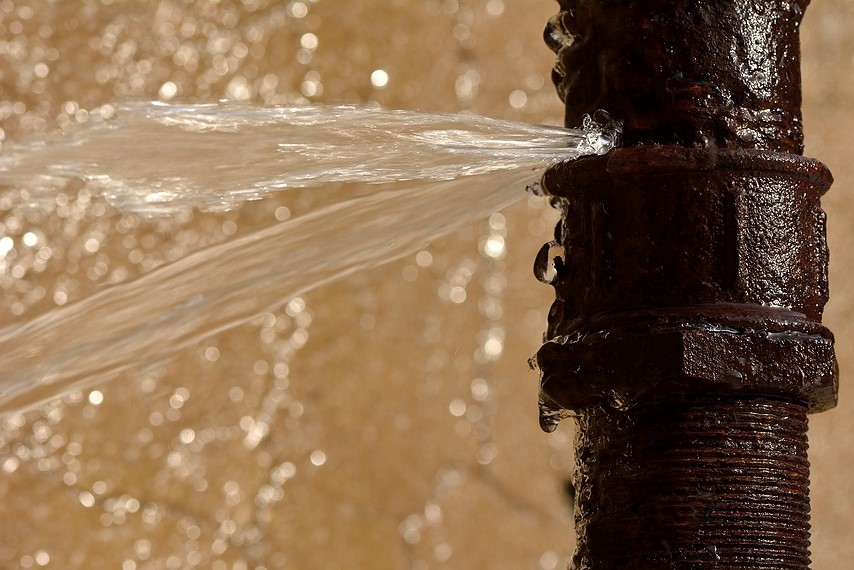News
What’s Being Done To Detect Water Leaks?
As we all know, water is one of the most precious resources that we have, but it’s all too easy for us to take it for granted, particularly in developed countries where we simply turn on a tap and out it comes.
But access to water is coming increasingly under threat around the world, thanks to climate change, urbanisation, population growth, pollution and water mismanagement, and it’s essential that action is taken and fast to shore up supplies for future generations.
In the UK, one of our biggest issues that needs to be addressed with increasing urgency is water leakage. Figures from industry watchdog Ofwat show that approximately one-fifth of the water that runs through our pipe network is lost to leaks, in large part because of our ageing infrastructure and because of water suppliers’ operational strategies.
Achieving zero leaks is difficult because many of the problems will manifest far below ground, making them hard to detect, or be so small that they’re barely noticeable, trickling slowly away over time and wasting huge amounts without anyone even being aware that there’s an issue.
Some leaks will also be largely inevitable, no matter what action is taken, because pipes naturally sustain damage over the course of their lifetime through expansion and contraction, which can be exacerbated during drought or freezing weather conditions.
Although water leakage rates around England and Wales are now at their lowest levels ever – and still falling – water companies around the UK must still do more to tackle the issue.
Ofwat has set suppliers a challenge to slash leakage between 2020 and 2025 sufficiently to be able to serve six major cities: Cardiff, Birmingham, Bristol, Leeds, Liverpool and Sheffield. And in the long term, firms have also pledged to cut leakage by 50 per cent from 2017/2018 levels by the year 2050.
How are water leaks detected?
Fresh clean water is transported to homes and businesses around the UK via thousands of kilometres of pipes, buried under roads and private land. Much of this network has been in situ since Victorian times and, as such, a lot of it is no longer fit for purpose, having become too brittle to be able to withstand the demands of 21st century society.
But it’s not just age that causes problems and pipes can sustain all sorts of damage from ground movement, construction work, animals, excavations, tree roots, extreme weather events and so on, all of which can lead to leaks and water wastage as a result.
Some leaks are easy to find because water can be seen at the surface, a strong indication that there’s a problem nearby, but others are trickier – which means that a range of different strategies must be employed to find them.
Technology like smart metering, in-pipe monitoring, acoustic sensors, drone surveys and satellite imaging can all prove particularly useful in this regard, helping teams to find even the tiniest of leaks so that repairs can be carried out.
Interestingly, dogs can also be put to excellent use when it comes to water leak detection and various water companies, including Scottish Water and South West Water, are now turning to our canine companions to help them find problems across the network.
Apparently, these dogs are trained to detect traces of chlorine in treated drinking water supplies so they can find leaks where no water is showing on the surface. Once a potential leak is found, leakage teams are then sent out for repairs to be conducted.
Are pipe upgrades causing more issues?
While it’s essential that the nation’s infrastructure is upgraded so that the system is able to withstand the pressures of climate change and population growth, it’s now being suggested that the materials used for these upgrades are causing problems where leaks are concerned.
Writing for The Conversation, Jen Muggleton – principal research fellow in engineering and physical sciences at the University of Southampton – explained that a third of the network is now made up of plastic, which was brought in to help address our ageing infrastructure and reduce the number of leaks.
However, these pipes are also susceptible to leaks, especially at the joints, and unfortunately more traditional methods of leak detection that proved successful with metal pipes aren’t as effective with plastic.
Water leaks send out acoustic signals that can travel hundreds of metres and kilometres along metal pipes, signals that can be picked up by hydrophones to help pinpoint the location of a leak.
But with plastic pipes, this leak detection method hasn’t proved as successful because a lot of this acoustic energy transfers to the pipe wall where it then radiates into the ground or dissipates as heat, which means less energy travels along the pipes themselves. The consequence? Signals don’t reach the hydrophones and leaks can’t be detected.
Alternative solutions include measuring vibrations on the ground’s surface to identify leak locations or to make use of fibre optic telecommunication cables that are typically laid along pipeline routes and which could be utilised as distributed acoustic and temperature sensors.
How can businesses help?
Because industries of all kinds are so heavily reliant on water, it makes sense for businesses to find leaks across their sites so they can be repaired, ensuring operational resilience and reducing wastage… the added benefit of which, naturally, is saving money at the same time.
Having a water audit carried out of your premises is a good first place to start if you do want to prioritise water leak detection and repair. This will show you how and where you’re using water, revealing any weak areas and allowing you to identify issues over time so you can adopt the appropriate water-saving solutions as and when required.
If you’d like to find out more, get in touch with the H2o Building Services team today.
